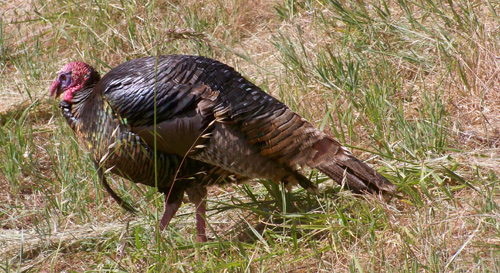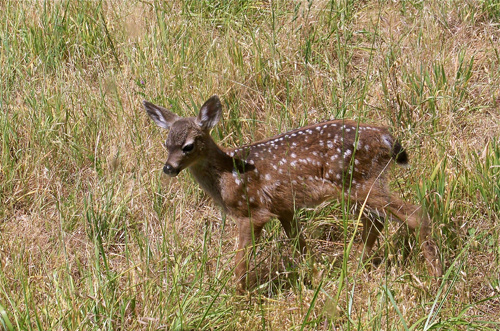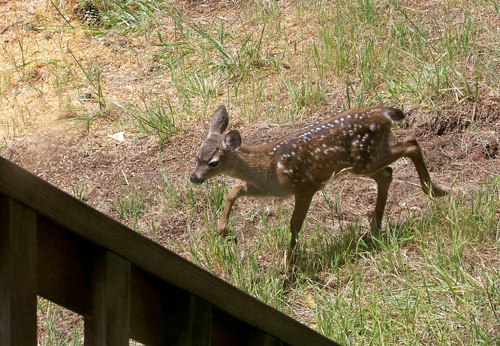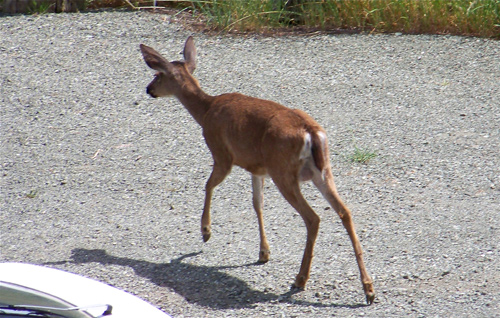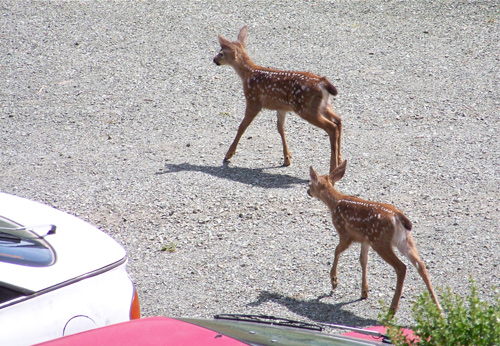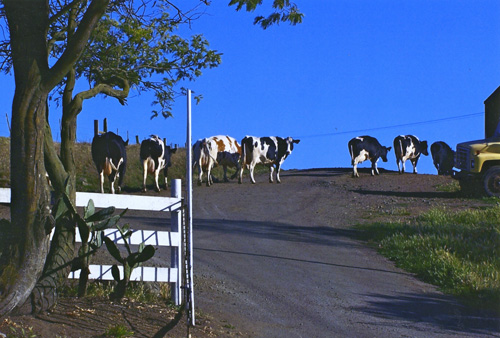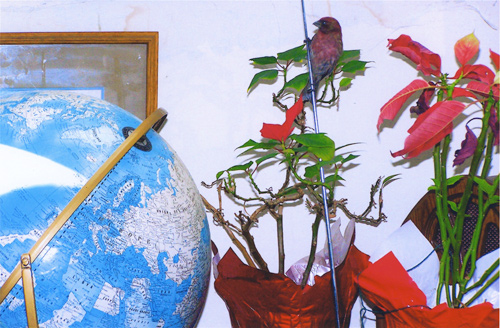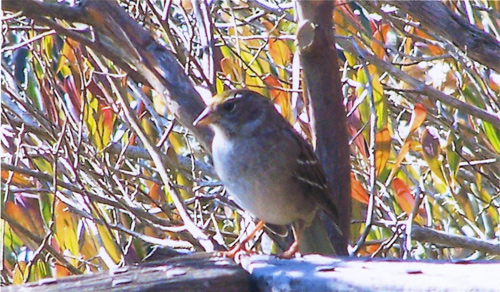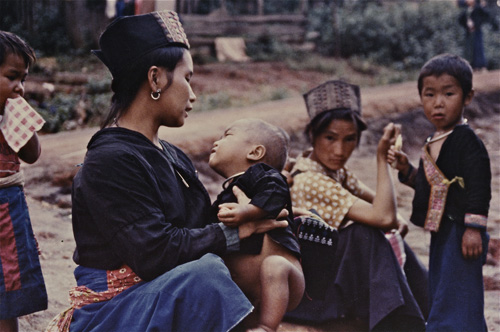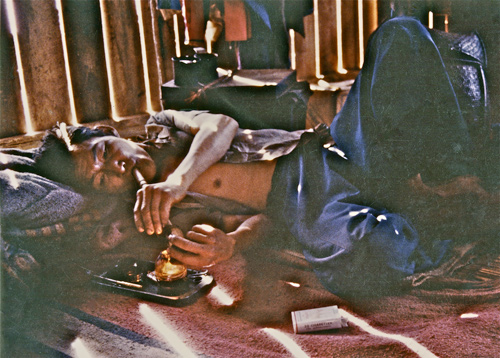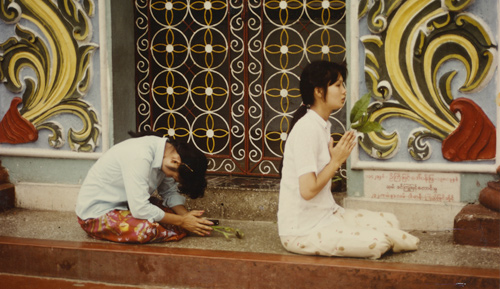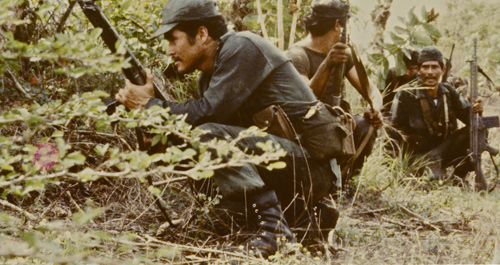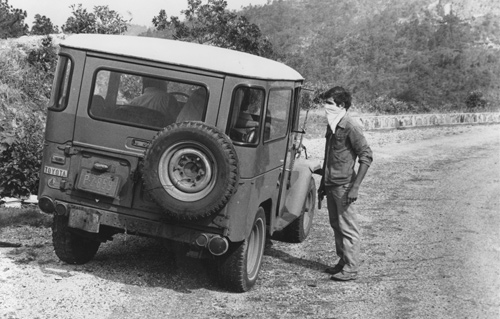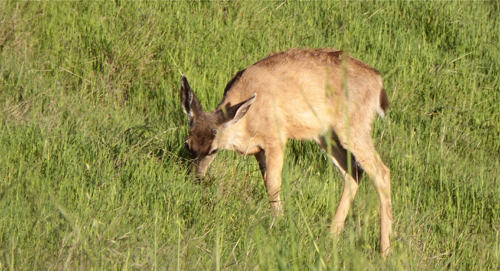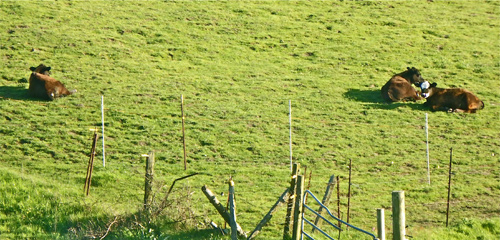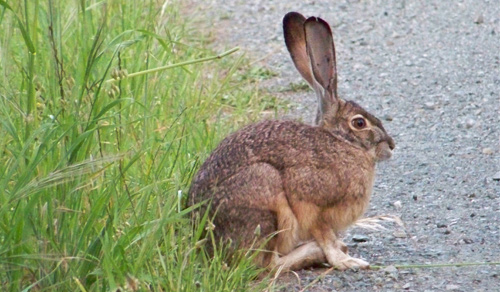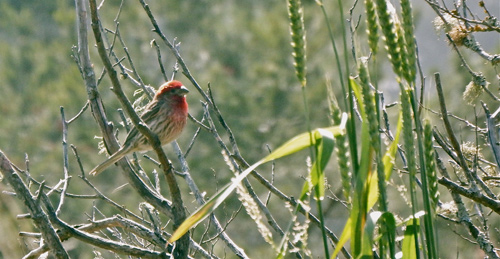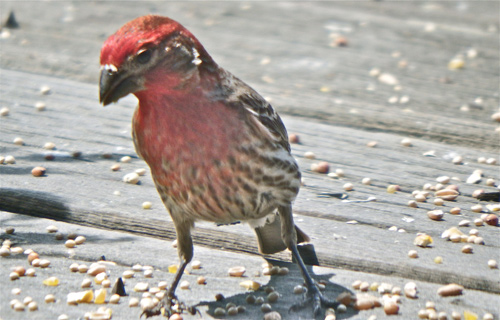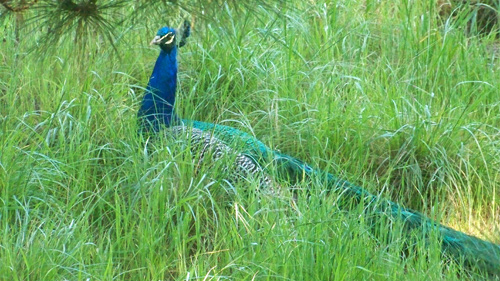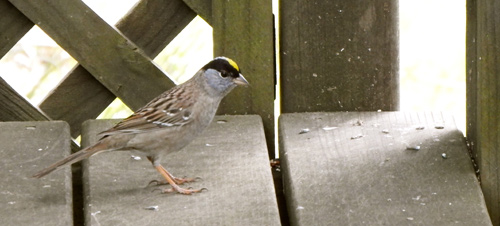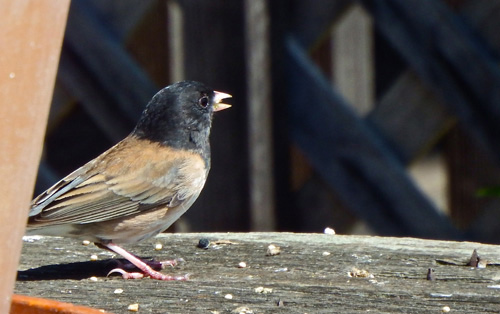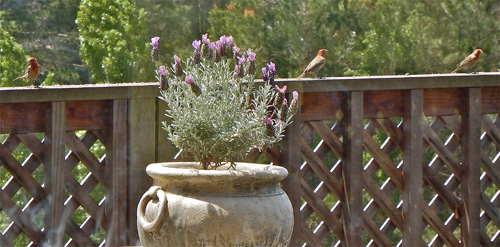Mon 26 May 2014
The advent of email roughly 20 years ago created a new phenomenon in humor: jokes that quickly get forwarded and re-forwarded to an ever-expanding crowd of Internet users worldwide.
A Canadian cousin and her husband, both of whom shall remain nameless so they keep me on their email list, send me one or two jokes almost every day. Believing that clever humor, including blonde jokes and the like, should be shared, I’ve decided to pass along a few.
Turkey in the straw outside Mitchell cabin last week.
An old man lived alone in the country. He wanted to dig his tomato garden, but it was difficult work as the ground was hard. His only son, Vincent, who used to help him, was in prison. The old man wrote a letter to his son and described his predicament. Dear Vincent, I am feeling pretty bad because it looks like I won’t be able to plant my tomato garden this year. I’m just getting too old to be digging up a garden plot. I know if you were here, my troubles would be over. I know you would be happy to dig the plot for me. Love, Dad
A few days later he received a letter from his son. Dear Dad, Don’t dig up that garden. That’s where I buried the bodies. Love, Vinnie
At 4 a.m. the next morning, FBI agents and local police arrived and dug up the entire area without finding any bodies. They apologized to the old man and left. That same day the old man received another letter from his son. Dear Dad, Go ahead and plant the tomatoes now. That’s the best I could do under the circumstances. Love you, Vinnie
A sign in the bank lobby reads: Please note that this bank is installing new drive-through ATM machines enabling customers to withdraw cash without leaving their vehicles. Customers using this new facility are requested to use the procedures outlined below when accessing their accounts. After months of careful research, male and female procedures have been developed. Please follow the appropriate steps for your gender.
Male Procedure:
1. Drive up to the cash machine.
2. Put down your car window.
3. Insert card into machine and enter PIN.
4. Enter amount of cash required and withdraw.
5. Retrieve card, cash and receipt.
6. Put window up.
7. Drive off.
Female Procedure:
1. Drive up to cash machine.
2. Reverse and back up the required amount to align car window with the machine.
3. Set parking brake; put the window down.
4. Find handbag, remove all contents onto passenger seat to locate card.
5. Tell person on cell phone you will call them back and hang up.
6. Attempt to insert card into machine.
7. Open car door to allow easier access to machine due to excessive distance from car.
8. Insert card.
9. Re-insert card the right way.
10. Dig through handbag to find diary with your PIN written on the inside back page.
11. Enter PIN.
12. Press cancel and re-enter correct PIN.
13. Enter amount of cash required.
14. Check makeup in rear view mirror.
15. Retrieve cash and receipt.
16. Empty handbag again to locate wallet and place cash inside.
17. Write debit amount in check register and place receipt in back of checkbook.
18. Re-check makeup.
19. Drive forward two feet.
20. Reverse back to cash machine.
21. Retrieve card.
22. Re-empty handbag, locate card holder, and place card into the slot provided.
23. Give dirty look to irate male driver waiting behind you.
24. Restart stalled engine and drive off.
25. Re-dial person on cell phone.
26. Drive for two to three miles; release parking brake.
Two Virginia hillbillies walked into a restaurant. While having a bite to eat, they talked about their moonshine operation. Suddenly, a woman who was eating a sandwich at a nearby table began to cough. After a minute or so, it became apparent that she was in real distress.
One of the hillbillies looked at her and said, “Kin ya swallar?” The woman shook her head no. Then he asked, “Kin ya breathe?” The woman began to turn blue and shook her head no.
The hillbilly walked over to the woman, lifted up her dress, yanked down her drawers, and quickly gave her right butt cheek a lick with his tongue. The woman was so shocked that she had a violent spasm, and the obstruction flew out of her mouth. Once she started to breathe again, the hillbilly walked slowly back to his table as his partner said, “Ya know, I’d heerd of that there ‘Hind Lick Maneuver,’ but I ain’t niver seed nobody do it!”
A blonde was on holiday and driving through Darwin (Australia). She desperately wanted to take home a pair of genuine crocodile shoes but was unwilling to pay the high prices the local vendors were asking.
After becoming frustrated with the no-haggle-on-prices attitude of one of the shopkeepers, the blonde shouted, “Well then, maybe I’ll just go out and catch my own crocodile, so I can get a pair of shoes for free.” The shopkeeper said with a sly, knowing smile, “Little lady, just go and give it a try!” The blonde headed out toward the river, determined to catch a crocodile.
Later in the day as the shopkeeper was driving home, he pulled over to the side of the river bank where he spotted the same young blonde woman standing waist deep in the murky water, a shotgun in her hand. Just then, he spotted a huge, 3-meter croc swimming rapidly toward her. With lightning speed, she took aim, killed the creature, and hauled it onto the slimy banks of the river.
Lying nearby were seven more of the dead creatures, all on their backs. The shopkeeper stood on the bank, watching in silent amazement. The blonde struggled and flipped the croc onto its back. Rolling her eyes heavenward in exasperation, she screamed, “What the hell? This one’s barefoot too!”
The stoplight on the corner buzzes when it’s safe to cross the street. I was crossing with a co-worker of mine. She asked if I knew what the buzzer was for. I explained that it signals blind people when the light is red. Appalled, she responded, “What on earth are blind people doing driving?”
No joke, something similar actually happened to the late Ralph Craib, the San Francisco Chronicle reporter who nominated The Point Reyes Light for its Pulitzer Prize. Ralph came home from World War II legally, but not totally, blind, and his family got a Disabled Veteran license plate for their car.
The plate permitted them to park in handicap spaces, but one day a San Francisco policeman upon seeing Ralph get into the car accused him of parking in a blue zone without having a handicap placard. Ralph pointed out the car’s Disabled Veteran license plate and noted he was legally blind.
If you’re legally blind, the cop demanded, what are you doing driving a car? With great patience, Ralph explained that the license plate allowed his wife to drop him off and meet him close to his destinations.

